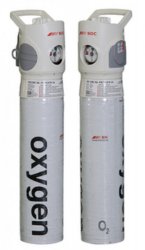No experience but generally:
Not eBay for quality medical equipment
Portable that is capable of battery power with spare batteries
Most come in shoulder pouch
It is better to get one which is approved by the airline you want to fly with
Qantas has a list of approved medical equipment:
https://www.qantas.com.au/infodetail/flying/beforeYouTravel/medical-support-equipment.pdf
The size is determined by your O2 requirements
Also the cost may be rebatable against some private health insurance plans.
The prices are generally eye watering but add independence to one’s life. Many companies also do a hire - which may be useful if using it only for air travel.
And you will need a prescription to get one















